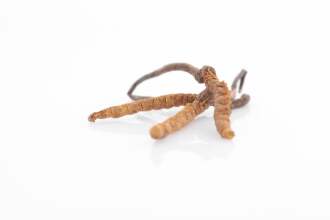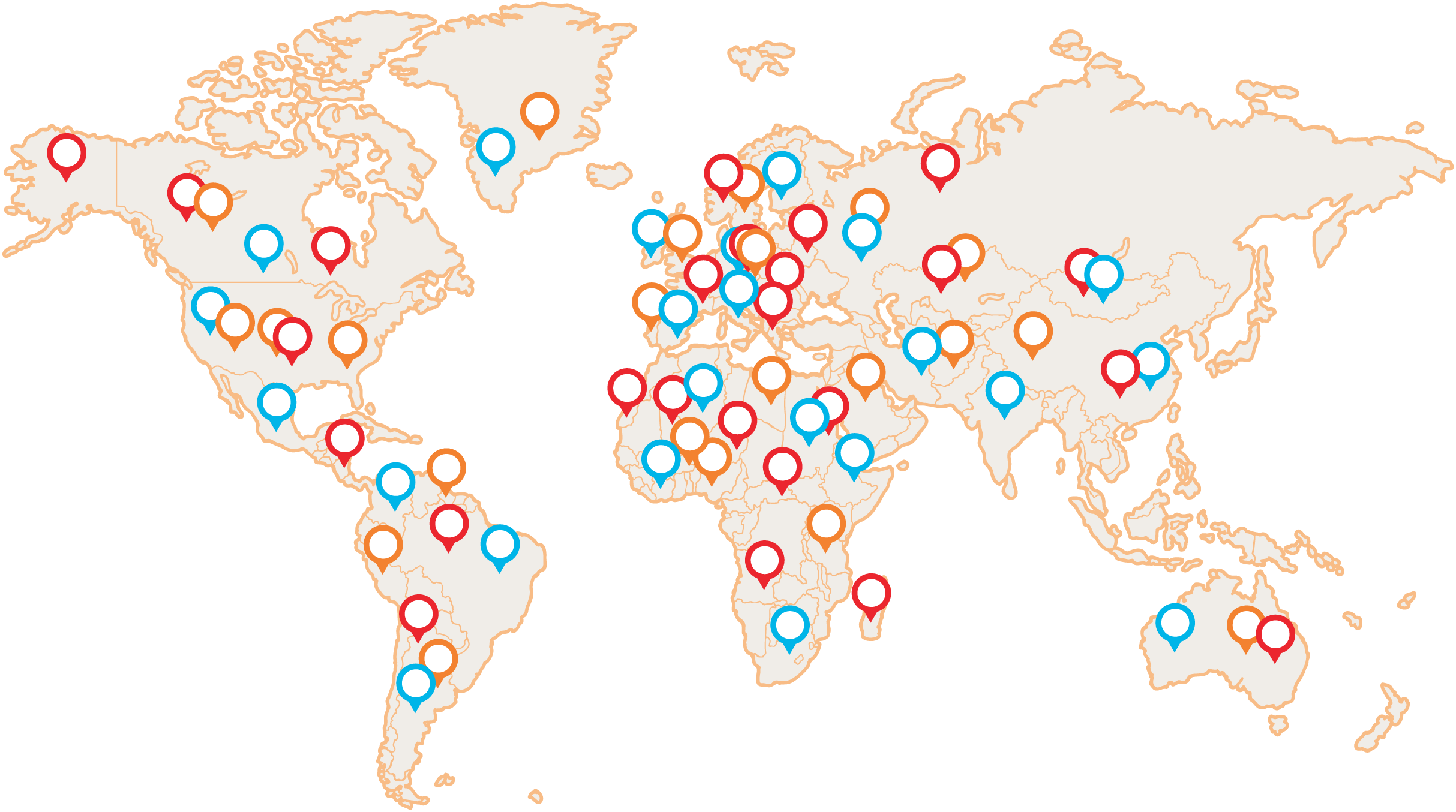Cordyceps(Cordyceps sinensis) is known by several names, such as Dong Chong Xia Cao /caterpillar in winter, grass in summer/, Chinese caterpillar mushroom, Ophiocordyceps sinensis, etc.It belongs to the genus Cordyceps, with other species such as C. militaris, C. liangshamensis, C. gunnii, etc. (Today there are approximately 700 known species of Cordyceps). It is an eruptive edible parasitic fungus. Its spores are caught on the surface of the caterpillar of the butterfly Thitarodes armoriacanus . The caterpillar is literally infected by the fungus and buries itself in the soil for its next developmental stage. Here, however, it is gradually consumed alive by the parasitic fungus. Cordyceps fills its entire chitinous shell with its sclerocium, which is the basis for the mature fungus. This process, the cycle, can take up to 6 years. In the last year, during the summer months, the fungus, with the help of the mycotoxins it produces, finally kills the caterpillar and literally sprouts a head-shaped formation called a stromatum from its head. Stromata are reddish-brown in colour and can reach a size of 8-10 cm. These formations produce spores that are released back into the environment to infect other butterfly larvae.
Cordyceps grows at altitudes above 3500 metres, mainly in the mountains of Tibet, in the Chinese provinces of Sichuan, Yunnan, etc. on plateaus. The mushroom is harvested between April and August. However, there is little to be found in the wild anymore. Apparently, in the last 25 years, its abundance has fallen by 90 %, which has naturally increased its value on the market, which is why it is cultivated artificially.However, the best quality caterpillars from the Tibetan Plateau still remain. The price of 4 pieces can be around 100 USD, while 1 piece of mushroom weighs approximately 0.5 grams, and therefore costs about 500 CZK. Due to the demand and price, other mushrooms of the genus Cordyceps, e.g. militaris, may also appear on the market and are passed off as Cordyceps sinensis (CS). Although they have very similar effects, they cannot replace the Chinese caterpillar. In 2001, DNA sequencing was able to identify strain CS-4 (paecilomyces hepialy), which has been sold under this name since 2005. CS-4 is considered to be the most effective strain of Cordyceps mycelia grown artificially, i.e. on a substrate. Initially the substrate was soybean, but there is a risk of using genetically modified soybean, or soybean allergies, there is a link between soybean and breast cancer, etc., rice was chosen as the substrate.
And why is Cordyceps so in demand? It is mainly due to its effect on animal health, humans not excluded. The surviving ancient stories describe how yak herders discovered the effects of Cordyceps. Animals that grazed Cordyceps in addition to grasses were more vital, stronger and healthier as well as more potent. This, of course, prompted the herders to start using the mushroom themselves. The written historical records we have then date back to around 620 AD. They are part of Chinese herbaria. It was not until 1726 that Cordyceps was 'discovered' for the western world, when it was introduced to experts at a mycological conference in Paris. Although it was listed in mycological atlases, its effects were not known, and this did not change until more than 2 centuries later. In 1964, Cordyceps was included as a herbal medicine in contemporary Chinese pharmacology.
We would like to inform you that our website can no longer make claims that might give the impression of any medicinal effect of herbs or mushrooms. Current EU legislation prohibits this. Even though traditional Chinese medicine has been around for thousands of years and has been tested on countless patients. At the same time, we must not mention the effects proven by contemporary scientific studies. But we believe in the common sense of our customers. For detailed information about herbs and mushrooms, please search the publicly available sources on the Internet. For example, valuable information can be found at www.tcmencyklopedie.cz.
Sources of information on vital mushrooms:
Martin Powell - Medicinal Mushrooms A Clinical Guide
Pavel Valíček - Mushrooms and their medicinal effects
G.M. Halpren, A.H. Miller - Medicinal Mushrooms Ancient Remedies dor Modern Ailments
G.M. Halpren - Healing Mushrooms
Christopher Hobbs - Medicinal Mushrooms An Ecploration of Tradition, Healing and Culture
Robert Rogers - The Fungal Pharmacy
Vladimir Ando - Pharmacology of Classical Chinese Medicine
Radomir Soch, Alexandr Jegorov - Encyclopedia of Medicinal Mushrooms
Bensky - Materia Medica
 Medicinal mushrooms PRO (17)
Medicinal mushrooms PRO (17) MyTao Edition (14)
MyTao Edition (14) Medicinal mushroom Extracts (25)
Medicinal mushroom Extracts (25) Combination of mushrooms and herbs (18)
Combination of mushrooms and herbs (18) Traditional recipes (5)
Traditional recipes (5) BIO medicinal mushrooms powder (9)
BIO medicinal mushrooms powder (9) Syrups (12)
Syrups (12) Dried medicinal mushrooms (7)
Dried medicinal mushrooms (7) Honey products (5)
Honey products (5) Vitamins (4)
Vitamins (4) BIO green food (2)
BIO green food (2)
